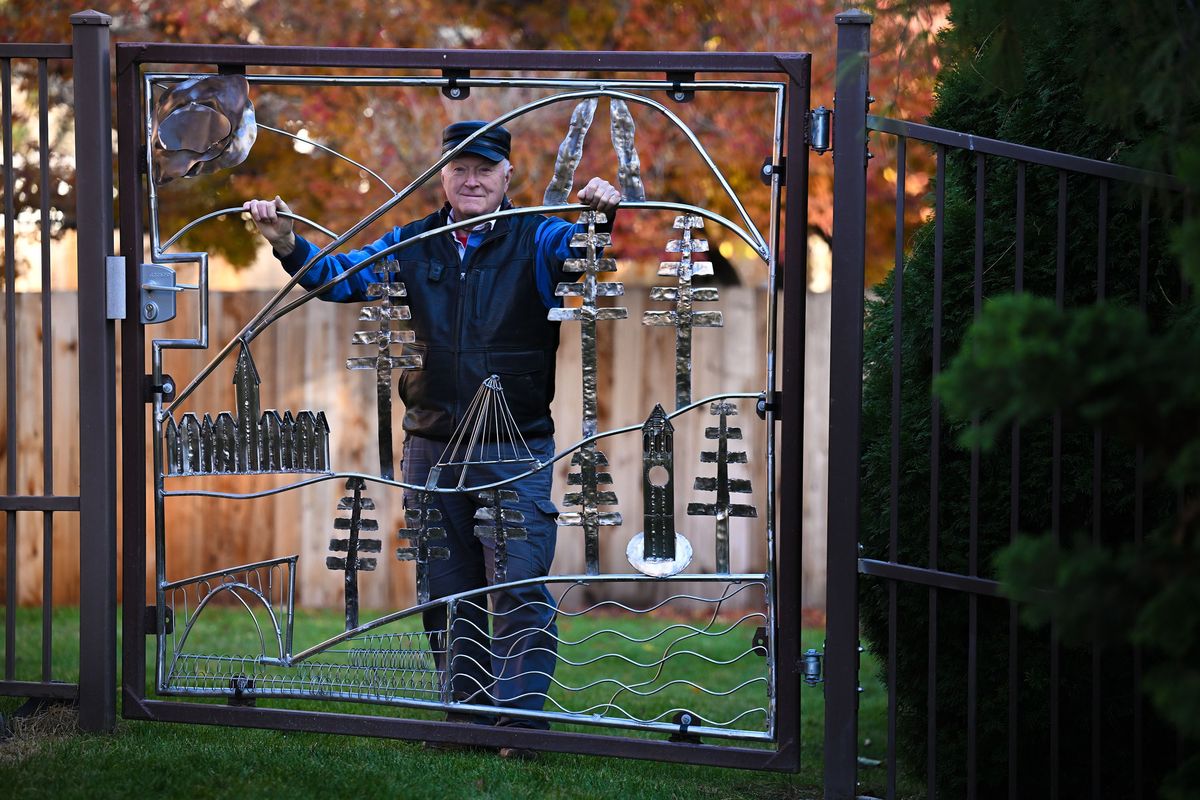Artistic landmarks: Family creates new gate inspired by Turnbull’s copper tubing art

It’s not often that artwork by an iconic artist comes with a house, but that’s what happened when David Partovi purchased a home in 2018.
A gate and a fence panel created by Sister Paula Mary Turnbull flanked the garage.
Known as the “welding nun,” Sister Paula, a sculptor and educator, created liturgical and whimsical metal sculptures. Her most famous piece is the Garbage Goat in Riverfront Park.
The work she created for the home’s previous owner features a fence panel with winding vines and flowers. The adjacent animal-themed gate includes fun creatures like Pegasus and a dragon.
“There was another Sister Paula gate that was sold to a neighbor down the street prior to our purchase of the house,” Partovi said.
Replacing that gate became a family affair. Partovi’s mother, Pat Partovi, suggested using Sister Paula’s work as inspiration. Her husband, Tom Horne, offered to create it.
“I’m a retired mechanical engineer,” Horne said. “I’d never done any artistic metalwork before.”
The Turnbull gates are made of copper tubing, so Horne experimented with that. However, the opening was much larger than the space on the opposite side of the home. He needed something sturdier for the 6-by-6-foot area.
“It wasn’t strong enough for the width I needed, so I decided to use stainless steel,” Horne said.
He sketched out his ideas on a large piece of plywood.
“I picked out the elements I wanted, the Monroe Street Bridge, the courthouse, the Clocktower and the Pavilion.”
Then he gathered his somewhat unusual materials.
“I bought $40 worth of used boat ladders,” he said.
He used them to fashion Mount Spokane at the top of the gate, complete with two ski runs sloping down into fir trees.
A cloud he created from an old kitchen sink drifts nearby, and below it, the pointed tower of the Spokane County Courthouse looms.
The Spokane Pavilion arches gracefully next to the Great Northern Clocktower. Horne pointed to the Clocktower.
“I used an old frying pan for the base,” he said.
Beneath the Pavilion and the Clocktower, the Spokane River flows – its roiling waves crafted from broken sprinkler springs.
The water churns under the iconic arch of the Monroe Street Bridge.
Horne’s project took several years to complete, but the end result is a nod to Sister Paula’s work, just as he envisioned.
“The hardest part was learning to TIG weld,” he said.
Partovi is delighted with Horne’s work.
“I love it! When we finally had it installed, I knew it would gleam at certain times of day,” he said. “And it does. It just gleams.”